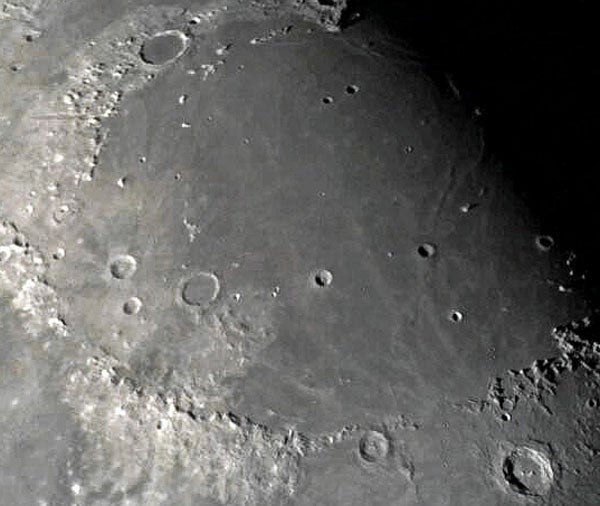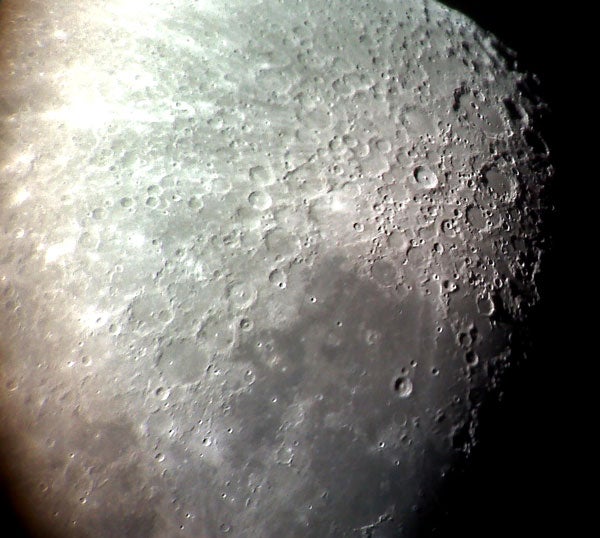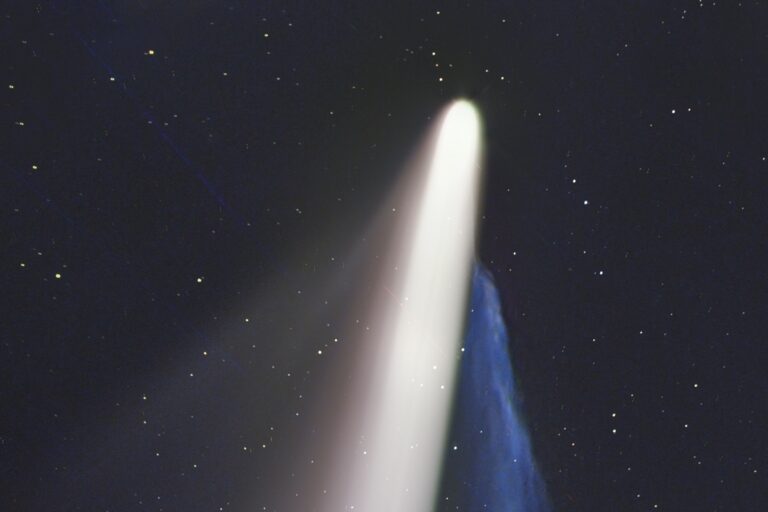Still here? Don’t say you weren’t warned! Truth be told, I’m not totally clueless when it comes to the art of astroimaging, and I didn’t really try to cram a roll of film into a digital camera. In fact, I shared my learning experience with basic digital camera astrophotography in the February 2010 issue of the magazine (“Astroimaging 101”). This month, I describe my introduction to a similar, but even less expensive, technique — astroimaging with a cellphone.
Last January, I received an email from Glenn Holland of Marina Del Rey, California. He enthusiastically described his success taking images of the Moon through an 8-inch Schmidt-Cassegrain telescope with a smartphone. The photographs he attached were amazingly detailed. Glenn sent the same email directly to the editors at Astronomy, who were impressed enough to print part of the text of his email, along with one of his Moon photos, in the July issue of the magazine (“Tricky imaging,” page 10).
I wholeheartedly agree! Backyard astronomy is much more enjoyable when you explore new and different aspects of the hobby. For anyone, novice or expert, put off by the expense and complexity of high-end astroimaging, the camera function of a cellphone provides a simple, inexpensive way to dabble in astrophotography. You may not go as “deep” as the individual who owns elaborate equipment, but if you target the Moon, you’ll get some great images.
I don’t own a smartphone like Glenn, but my son David does. He supplied the phone; I supplied the telescope. Curious about the astroimaging capability of a small-aperture instrument, I opted for a 4.5-inch f/8 reflector.
The process was similar to the one I employed when taking digital camera images of the Moon — no surprise, as a cellphone camera is also digital. After centering the Moon in the telescope’s field of view (I started out with a low-power eyepiece), I simply positioned the cellphone, flash function off, until a clear image filled the view screen. A click of a button and — voilà! A picture of the Moon!
And now, the two Glenns — Chaple and Holland — invite you to try your luck imaging the Moon with your cellphone. If you don’t own one, hook up with a friend who does. Often, it’s more fun to share a cosmic adventure than to go it alone.
Oh, and a final thought. In the past, I’ve lamented about the loss to other interests of middle and high school students who were once captivated by observing the night sky. Teens in general love gadgets, and a cellphone is one most of them own. Teachers, parents, or anyone involved with middle or high school astronomy outreach programs should show this article to their teenagers and encourage them to get out a cellphone and telescope and try imaging the Moon.
For students not fortunate enough to own a telescope, offer to share the use of your setup at a specially arranged observing session (no more than a half dozen participants!). If you’re a teenager reading this article, you know what to do. It might be a longshot, but that image of the Moon taken with a cellphone might just spark a lifelong interest in astronomy.
Questions, comments, or suggestions? Email me at gchaple@hotmail.com. Next month: astro-music revisited. Clear skies!












